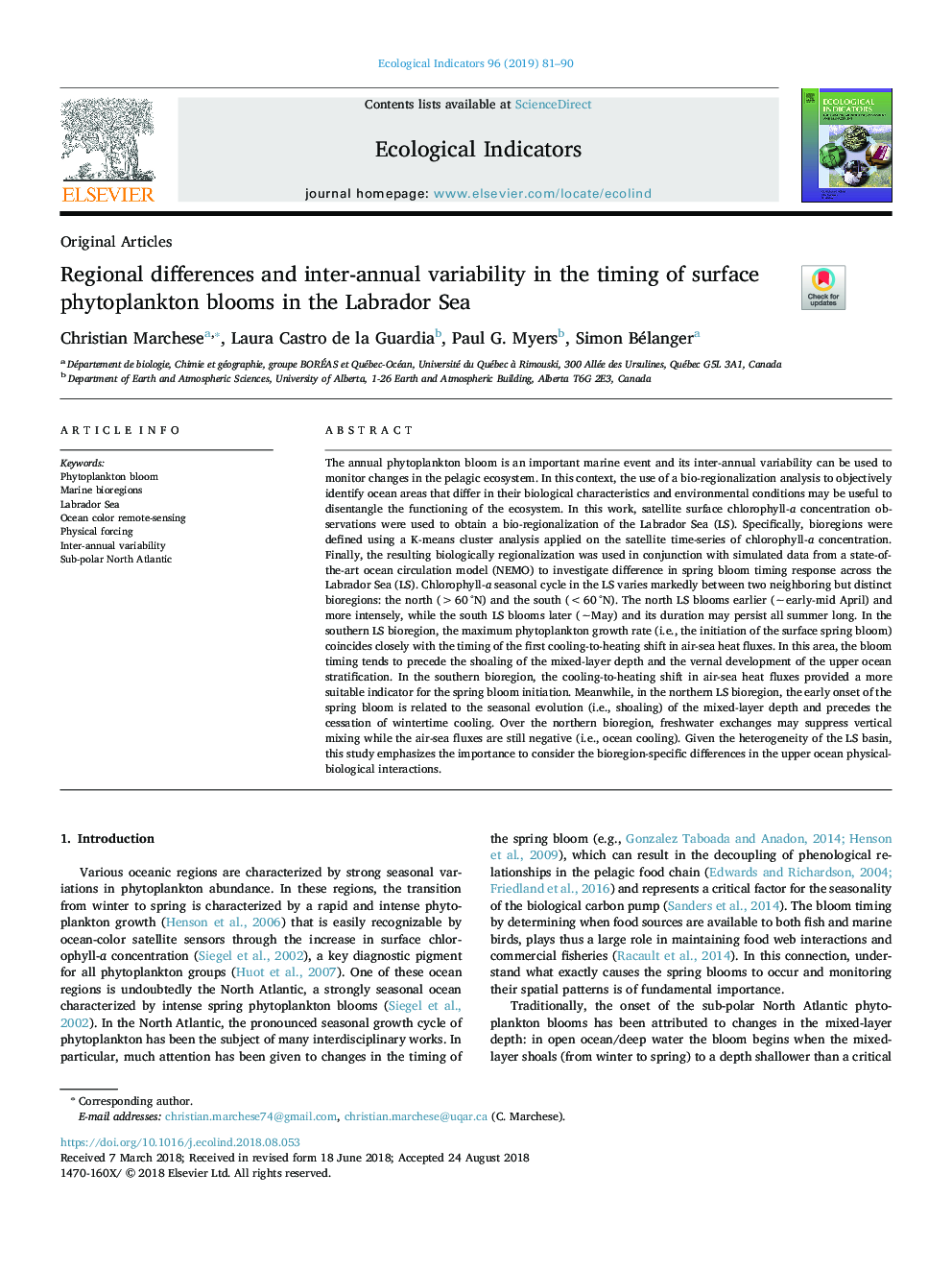| کد مقاله | کد نشریه | سال انتشار | مقاله انگلیسی | نسخه تمام متن |
|---|---|---|---|---|
| 10144190 | 1646298 | 2019 | 10 صفحه PDF | دانلود رایگان |
عنوان انگلیسی مقاله ISI
Regional differences and inter-annual variability in the timing of surface phytoplankton blooms in the Labrador Sea
ترجمه فارسی عنوان
اختلافات منطقه ای و تغییرات بین سالیانه در زمان فیتوپلانکتون سطحی شکوفه در دریای لابرادور
دانلود مقاله + سفارش ترجمه
دانلود مقاله ISI انگلیسی
رایگان برای ایرانیان
کلمات کلیدی
شکوفه فیتوپلانکتون، مناطق بیرونی دریایی، دریا لابرادور، سنجش از راه دور رنگ اقیانوس، مجبور کردن فیزیکی، تنوع بین سالیانه، قطب شمال اقیانوس اطلس،
موضوعات مرتبط
علوم زیستی و بیوفناوری
علوم کشاورزی و بیولوژیک
بوم شناسی، تکامل، رفتار و سامانه شناسی
چکیده انگلیسی
The annual phytoplankton bloom is an important marine event and its inter-annual variability can be used to monitor changes in the pelagic ecosystem. In this context, the use of a bio-regionalization analysis to objectively identify ocean areas that differ in their biological characteristics and environmental conditions may be useful to disentangle the functioning of the ecosystem. In this work, satellite surface chlorophyll-a concentration observations were used to obtain a bio-regionalization of the Labrador Sea (LS). Specifically, bioregions were defined using a K-means cluster analysis applied on the satellite time-series of chlorophyll-a concentration. Finally, the resulting biologically regionalization was used in conjunction with simulated data from a state-of-the-art ocean circulation model (NEMO) to investigate difference in spring bloom timing response across the Labrador Sea (LS). Chlorophyll-a seasonal cycle in the LS varies markedly between two neighboring but distinct bioregions: the north (>60â¯Â°N) and the south (<60â¯Â°N). The north LS blooms earlier (â¼early-mid April) and more intensely, while the south LS blooms later (â¼May) and its duration may persist all summer long. In the southern LS bioregion, the maximum phytoplankton growth rate (i.e., the initiation of the surface spring bloom) coincides closely with the timing of the first cooling-to-heating shift in air-sea heat fluxes. In this area, the bloom timing tends to precede the shoaling of the mixed-layer depth and the vernal development of the upper ocean stratification. In the southern bioregion, the cooling-to-heating shift in air-sea heat fluxes provided a more suitable indicator for the spring bloom initiation. Meanwhile, in the northern LS bioregion, the early onset of the spring bloom is related to the seasonal evolution (i.e., shoaling) of the mixed-layer depth and precedes the cessation of wintertime cooling. Over the northern bioregion, freshwater exchanges may suppress vertical mixing while the air-sea fluxes are still negative (i.e., ocean cooling). Given the heterogeneity of the LS basin, this study emphasizes the importance to consider the bioregion-specific differences in the upper ocean physical-biological interactions.
ناشر
Database: Elsevier - ScienceDirect (ساینس دایرکت)
Journal: Ecological Indicators - Volume 96, Part 1, January 2019, Pages 81-90
Journal: Ecological Indicators - Volume 96, Part 1, January 2019, Pages 81-90
نویسندگان
Christian Marchese, Laura Castro de la Guardia, Paul G. Myers, Simon Bélanger,
